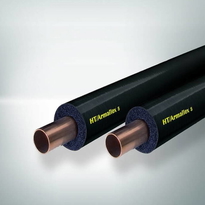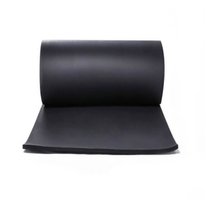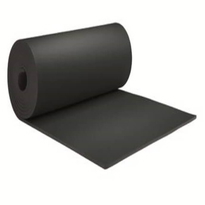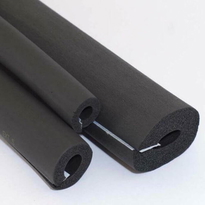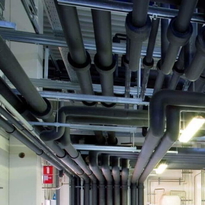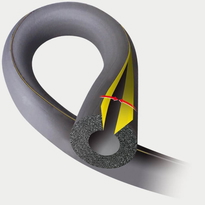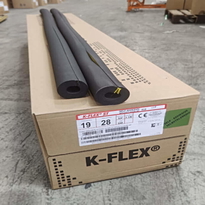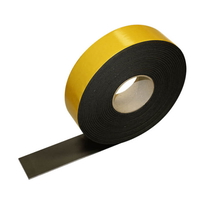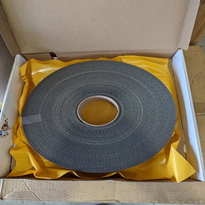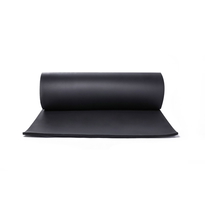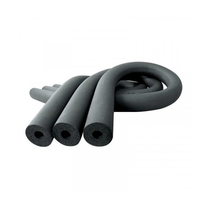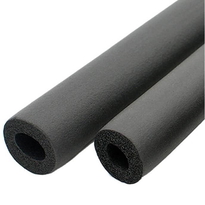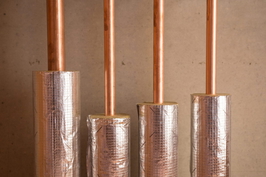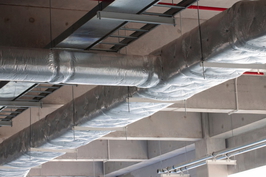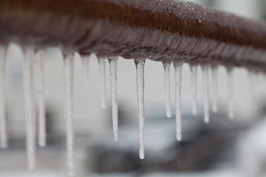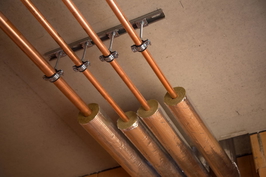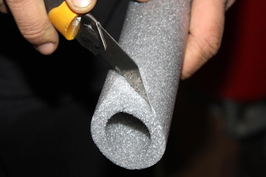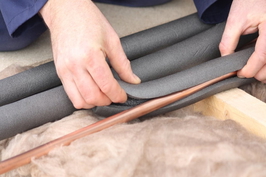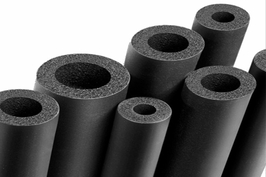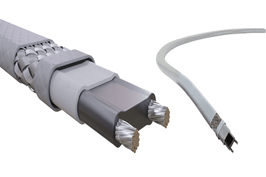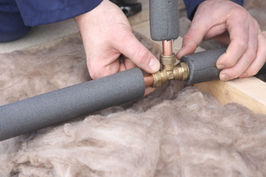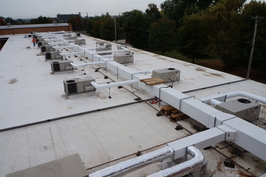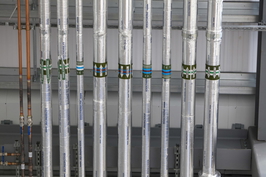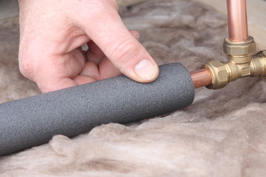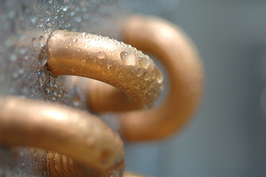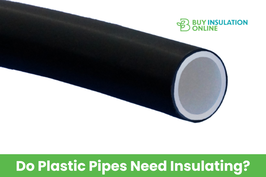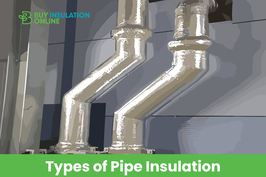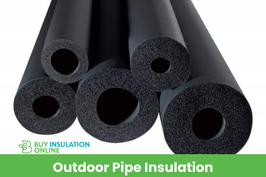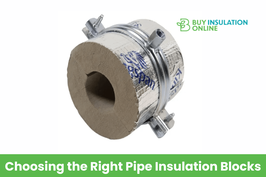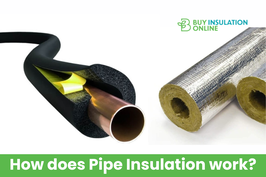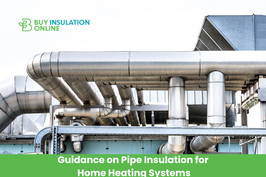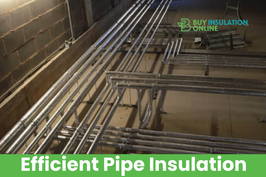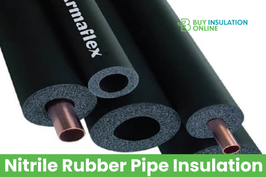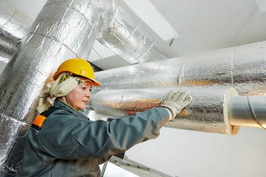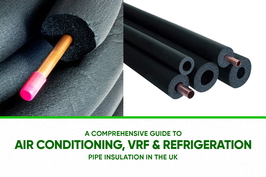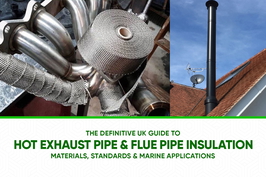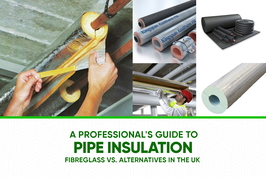Refrigerant Pipework Insulation
Refrigerant pipework insulation involves selecting durable materials such as cellular glass, elastomeric foam, or polyisocyanurate that provide high thermal resistance, prevent condensation, and resist moisture and environmental damage. Proper support systems, including rigid supports spaced at approximately one metre intervals, ensure stability and prevent sagging, particularly in outdoor installations. Adherence to industry standards such as ASTM C518 is essential for compliance with safety, fire, and environmental regulations. Continuing guidance will outline detailed procedures for installation, maintenance, and regulatory compliance to ensure effective and safe pipework insulation.
Types of Insulation Materials for Refrigerant Piping
Selecting the appropriate insulation materials for refrigerant piping is a vital step in ensuring system efficiency, safety, and longevity. In the UK, the choice of insulation should meet industry standards and accommodate the specific requirements of the installation environment. Common insulation options include closed-cell materials such as cellular glass, flexible elastomeric, polyisocyanurate, and polystyrene, all of which are recommended by ASHRAE for their low water vapour transmission rates and minimal absorption. These characteristics help maintain thermal performance and prevent moisture ingress, which can compromise system integrity. Cellular glass, being non-porous, provides excellent moisture resistance and thermal stability, making it particularly suitable for cryogenic refrigerant systems. Polyurethane and polyisocyanurate foams are highly valued for their superior thermal resistance, helping to reduce energy losses along the piping. Cellular glass is an excellent choice in applications demanding high moisture resistance and thermal stability, making it particularly suitable for cryogenic refrigerant systems. Flexible elastomeric insulation offers reliable vapour barriers combined with durability and ease of installation, ensuring consistent performance over the service life of the system. Foam glass, being non-combustible, is ideal for environments with stringent safety requirements or where fire resistance is paramount. Additionally, proper installation techniques are critical to maximizing the performance of refrigerant pipe insulation and ensuring long-term system reliability. While less commonly used, polyethylene insulation can be suitable for specific situations, especially where budget constraints are a concern or where particular chemical resistance is needed. The properties of each material directly influence the effectiveness of insulation, system durability, and compliance with safety standards. When selecting insulation for refrigerant piping in the UK, it's critical to consider factors such as thermal performance (using K-Values), moisture resistance, fire safety, and application-specific conditions to ensure optimal system operation and safety.
Criteria for Selecting Effective Insulation
The process of selecting effective insulation for refrigerant piping requires a thorough evaluation of several key performance factors that directly impact system efficiency, safety, and durability. Insulation materials are assessed based on their thermal conductivity, water vapour transmission, water absorption, continuous service temperature, and compliance with fire safety standards. These criteria ensure minimal heat transfer, resistance to moisture ingress, and materials capable of withstanding operational temperatures. Additionally, selecting materials that meet industry standards such as ProWarm Insulation Boards ensures reliable performance and compliance with safety regulations. Operational conditions, such as ambient temperature, humidity levels, wind velocity, and system pressure, also play a significant role in material choice. Adhering to British standards and regulations, alongside recognised industry standards, helps to guarantee safety, energy efficiency, and quality assurance. Furthermore, environmental considerations including ultraviolet resistance, fungi resistance, and overall durability are crucial for maintaining performance over time. These factors contribute to reduced maintenance costs, enhanced system longevity, and support sustainability objectives within UK building and industrial contexts.
Installation Guidelines and Considerations
Proper installation of refrigerant pipework insulation requires careful preparation to ensure maximum efficiency and durability. Accurate measurement of piping is essential for selecting correctly sized insulation sleeves, preventing gaps and ensuring effective thermal resistance. Selecting suitable materials, such as cellular glass or flexible foam, is important for achieving optimal thermal performance and long-term stability.
The work environment must be free of moisture, debris, and dust to maximise adhesion of insulation and minimise future issues such as moisture ingress or detachment. When applying adhesive, it should be spread at regular intervals along the pipe and the insulation material to secure their attachment securely. All joints and overlaps must be sealed properly using appropriate sealing techniques to prevent moisture ingress, which can compromise insulation performance over time.
Support spacing plays a vital role in maintaining the stability and effectiveness of the insulation system. Insulation should be supported with rigid foam inserts at regular intervals, typically every metre, to prevent sagging and movement. Ensuring consistent support spacing helps the insulation maintain its position and prevents future damage.
Outdoor installations demand additional protection. Weather-resistant coatings and protective jackets should be used to shield insulation from environmental factors such as rain, UV rays, and temperature fluctuations. These protective measures extend the lifespan of the insulation system and preserve its thermal performance.
Using proper support systems can significantly enhance the durability of pipework insulation in challenging environments. Key considerations include:
Aspect |
Key Considerations |
| Material Compatibility | Use suitable materials tailored to the installation environment |
| Sealing Techniques | Seal all joints and overlaps to prevent moisture ingress |
| Support Spacing | Maintain consistent support intervals, typically every metre |
| Environmental Conditions | Ensure the environment is suitable for the chosen insulation |
Adhering to these guidelines will help ensure an effective, durable, and efficient insulation installation that minimises energy loss and protects the integrity of the pipework over its lifespan.
Regulatory Standards Governing Insulation Use
Regulatory standards establish essential requirements for refrigerant pipework insulation to promote safety, energy efficiency, and consistent performance across various applications. These standards specify minimum insulation properties, such as a thermal resistivity of at least R-3 (resistance to heat flow), for vapour lines. Where applicable, the use of closed-cell materials such as cellular glass and elastomeric foam is recommended to minimise water vapour transmission and prevent condensation. Local building regulations, including the UK’s Building Regulations and the Institute of Engineering and Technology (IET) standards, often specify mandatory insulation thicknesses—typically a minimum of 12 mm (equivalent to a U-Value of around 0.3 W/m²K)—which may need to increase depending on operating temperature, pipe diameter, or specific environmental conditions. For outdoor installations, insulation materials must be protected with suitable jacketing that resists weather effects, UV exposure, and physical damage, thereby maintaining insulating properties over time. Insulation materials employed must meet performance standards such as those outlined in ASTM C518 for thermal conductivity testing and ASTM E96 for water vapour transmission. Choosing insulation with proper manufacturer certifications ensures that materials meet industry standards and regulatory requirements. Proper installation techniques are also mandated by standards, ensuring that insulation remains effective over the system’s lifespan. Regular inspections and maintenance are essential to ensure ongoing compliance, especially in challenging environments or where local site conditions may accelerate material deterioration. Adherence to updated codes and industry guidelines is critical for ensuring safety, energy efficiency, and regulatory compliance across all refrigeration and air conditioning projects.
Environmental and Safety Aspects of Insulation Options
Environmental and safety considerations play a crucial role in the selection and application of insulation options for refrigerant pipework in the UK. Effective insulation helps reduce energy consumption by enhancing system efficiency, which in turn decreases greenhouse gas emissions and supports broader sustainability initiatives. From 2017-2021 alone, mechanical insulation saved approximately $91 billion nationally, demonstrating its significant environmental impact. Proper insulation also prevents condensation on pipe surfaces, reducing the risk of mould growth and improving indoor air quality. Additionally, well-installed insulation minimises vibrations and noise, contributing to a safer and more comfortable environment for building occupants. Choosing materials with low global warming potential is an important aspect of environmentally responsible practice. Some insulation options have a high warming potential and can contribute to climate change; selecting more eco-friendly materials helps mitigate this impact. Accurate installation is essential to ensure optimal performance and durability of the insulation system. Correct installation facilitates easier maintenance and can extend the lifespan of the pipework, leading to reduced waste and resource usage. Using sustainable insulation materials aligns with long-term environmental objectives, particularly those targeting resource conservation and waste minimisation. Proper installation techniques also assist in achieving energy efficiency and compliance with environmental standards. Furthermore, adherence to relevant safety standards is imperative to prevent accidents caused by exposed or poorly insulated pipes. Proper insulation not only contributes to the overall safety of building occupants but also ensures compliance with UK safety regulations.
Conclusion
Selecting appropriate refrigerant pipework insulation requires careful consideration of material type, installation practices, regulatory compliance, and environmental impact. Effective insulation enhances energy efficiency, minimises condensation formation, and shields pipes from potential damage. Adhering to industry standards and regulations ensures safety and optimal system performance. By following comprehensive guidelines and choosing environmentally safe options, professionals can maintain system reliability and promote sustainability. This approach ultimately supports efficient operation and compliance within UK refrigeration applications.
